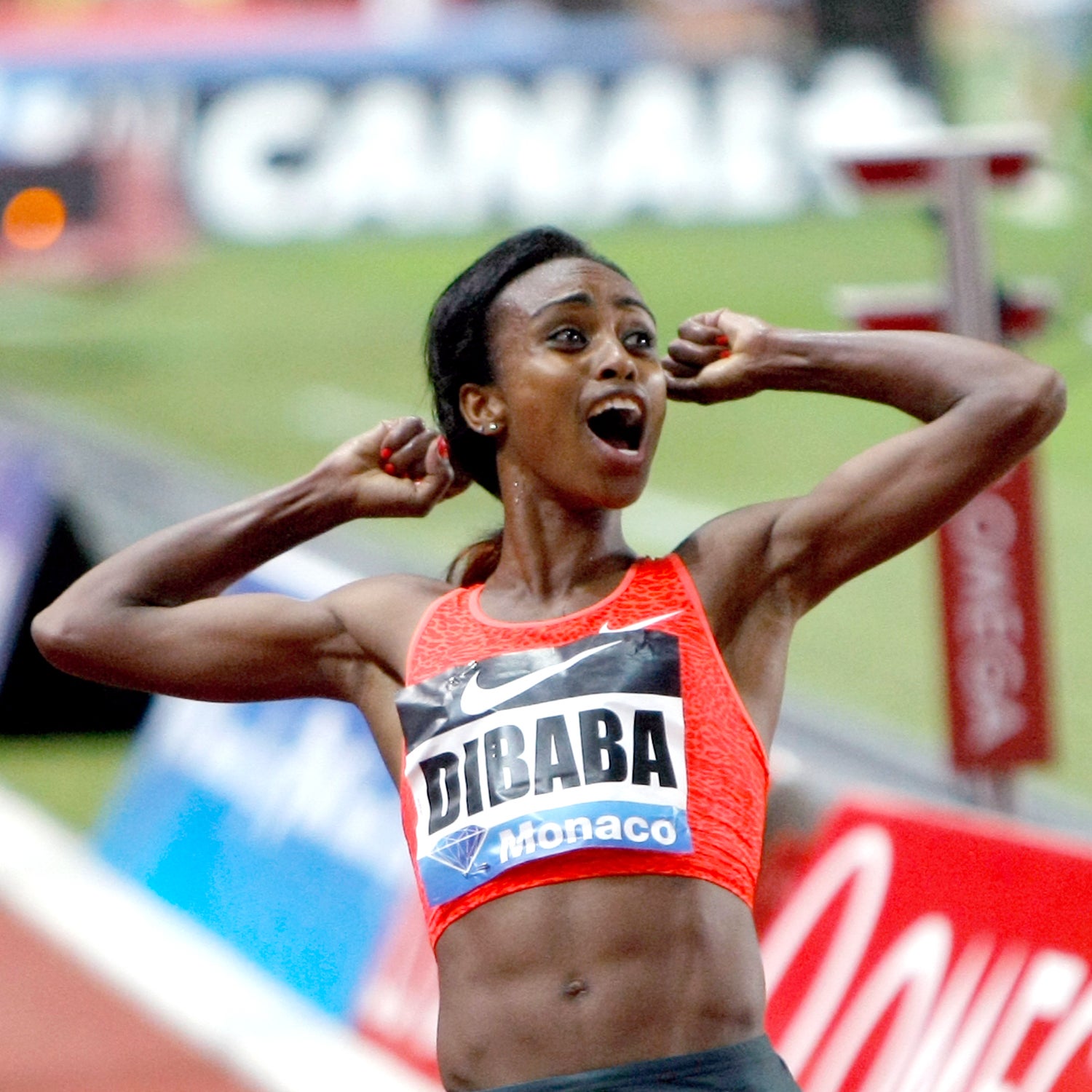For certain pop music acolytes, the unofficial theme song of the ‘88 Olympics will always be Whitney Houston’s immortal gusher “One Moment in Time,” the refrain of which includes the lines: “Give me one moment in time/When I’m racing with destiny/Then in that one moment of time/I will feel eternity.” If you were a woman competing in the final of the 100 and 200 meters of those Games, it wasn’t just destiny you were racing with, it also the infamous Florence Griffith Joyner, still the fastest woman of all time, by a long shot.
More than 15 years after her premature death in 1998, Flo-Jo remains a controversial figure. Strong allegations that her bulked-up physique and sudden performance increase were the product of human growth hormone rather than innate talent are countered by those who lobby to save/restore her legacy by pointing out that she never failed a drugs test. Regardless of where one may stand on the issue, the ongoing debate surrounding Flo-Jo’s case is a useful reminder that doping sullies sports, not just by helping cheaters win, but by robbing audiences of the opportunity to appreciate genuine athletic genius without cynicism.
The latter came to mind recently, while watching one of the most incredible races in the history of track and field.
For metric milers, there must have been something in the Mediterranean air last Friday night at Monaco’s annual Herculis track meet. In the tenth installment of this year’s Diamond League series, both 1500 meter races saw blazingly fast times, including an American record (3:56.29) by Shannon Rowbury and a men’s race where Olympic and world champion Asbel Kiprop ran the third fastest 1500 ever, clocking 3:26.69. Despite coming away with a victory and a personal best, there was visible disappointment on the Kenyan’s face once he saw how achingly close he had come to Hicham El Guerrouj’s world record of 3:26.00, set almost exactly 17 years ago.
El Guerrouj’s time is the most long-standing record for a major running event in men’s track and field and there could hardly have been a more appropriate prelude to what happened in the women’s 1500, which took place an hour later. Here, 24-year-old Genzebe Dibaba of Ethiopia broke a record considered even more untouchable than El Guerrouj’s. When Dibaba crossed the line in 3:50.07 she bested Qu Yunxia of China’s time of 3:50.46, a (highly contentious) mark that had stood for nearly 22 years and which no runner in recent years had come remotely close to running.
In a performance that should at least spark some discussion about whether we may one day see a sub 4-minute mile by a female athlete–the Ethiopian’s time for 1500 meters converts to a 4:08.41 mile (1609.344 meters)–Dibaba ran a 60-second first lap, and closed the race with a 2:01 final 800 meters.
Before Dibaba’s race last Friday, in six of the seven mainstay events in professional athletics — 100, 200, 400, 800, 1,500, 5,000, and 10,000 meters — the women’s world record has stood for at least 22 years. (The only exception is the 5,000, where the record-holder is none other than Genzebe Dibaba’s sister, Tirunesh. That said, the 5,000 didn’t become a standard Olympic event for women until 1996.)
The unattainability of so many women’s track records is generally attributed to the fact that so many of these athletes raced under dubious circumstances, from Flo-Jo’s questionable relationship to HGHs, to Communist-era runners like East Germany’s Marita Koch, whose 400 meter record, set in 1985, is more than a full second faster than anyone has run in almost 20 years.
For the optimistic among us, Genzebe Dibaba’s record might also be regarded as a victory for “clean sport.” The unattainability of so many women’s track records is generally attributed to the fact that so many of these athletes raced under dubious circumstances.
On the distance front, the otherworldly performances of Chinese female athletes like Qu Yunxia in the early ‘90s are viewed with great suspicion, as their best performances were characterized by a spike in ridiculously fast times that were pre and proceeded by more, to not be too polite about it, “plausible” efforts. In 1993, in the same meet in which Yunxia ran her 1,500 record, her teammate Wang Junxia ran 29:31.78 for the 10,000, a time that remains over 20 seconds quicker than anyone has run ever since. After the competition had ended, Ma Junren, the infamous coach during the powerhouse years of Chinese women’s distance running, responded to skeptics by claiming that his runners’ success was partially due to “a health tonic made from caterpillar fungus.” A few years later, in the lead up to the 2000 Olympics in Sydney, six of his athletes failed drug tests and Junren was relieved of his coaching duties of the Chinese national team.
At present, there is no reason to believe Genzebe Dibaba’s 1,500 meter record isn’t one hundred percent legitimate. She has been competing in an age where drug testing is far more rigorous than in the days when most women’s track records were set, and has been turning in impressive performances for years, starting when she won two junior World Cross Country Championships as a teenager. Track fans should regard Dibaba’s achievements with all the respect due to a runner who can now claim to have run the fastest 1500 meters in history.
Unfortunately, however, all the recent doping scandals have made it harder and harder for us to appreciate phenomenal performances with the innocent awe which they may have inspired in another, prelapsarian era.
For a case in point, one need only regard Shannon Rowbury’s response in a post-race interview with si.com. When asked whether it “felt right” to have Dibaba finally dethrone the controversial Qu Yunxia as queen of the 1500 meters, Rowbury responded:
To be honest, I thought 3:50 was a time that no one would ever run. To see it with my own eyes was something I thought I’d never see in my lifetime. Once again, I just hope for the sport that we can eliminate as many of the people who are cheating and competing in an unfair way as possible. I hope that the people that are achieving things in the right way by working hard and fully committing themselves to a clean sport will be the ones accomplishing great things.
Indeed. But, as fans of clean sport, we shouldn’t forget that counteracting the detrimental effect of doping isn’t just about catching those who don’t play by the rules; it’s about still being able to celebrate the accomplishments of those who do. The challenge, of course, is that we cannot ever know for sure whether an athlete is clean or not. But if we aren’t willing to give them the benefit of the doubt–especially when no doubt is warranted–we might as well just stop watching.


